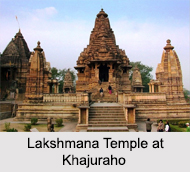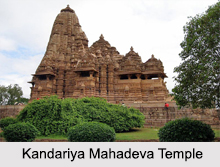 The Chandela was a Rajput Dynasty of Central India. This dynasty controlled much of the Bundelkhand region between the 9th and the 13th centuries. The Bundelkhand region was at that time called Jejakabhukti. Given below are the kings of Chandela.
The Chandela was a Rajput Dynasty of Central India. This dynasty controlled much of the Bundelkhand region between the 9th and the 13th centuries. The Bundelkhand region was at that time called Jejakabhukti. Given below are the kings of Chandela.
Madanavarman
Madanavarman was a Chandela Dynasty king of India. He is credited with the revival of the Chandela glory by subduing the neighboring kingdoms and commissioning of several tanks and temples.
Yashovarman
Yashovarman was a king of the Chandela Dynasty of India. He is credited with the establishment of the Chandelas as a sovereign power, although he formally acknowledged suzerainty of the Gurjara-Pratiharas. The conquest of Kalanjara is considered to be his major military achievement. It is important to note that Yashovarman had commissioned the Lakshmana Temple at Khajuraho.
Dhanga
Dhanga was a Chandela Dynasty king and a Shaivite by religion. Dhanga is known to establish the sovereignty of the Chandelas, who had served as vassals to the Pratiharas until his reign. It is important to note that temples at Khajuraho, including the Vishvanatha Temple were commissioned by Dhanga. According to a Khajuraho inscription, Dhanga had installed two lingas at the Vishvanatha Temple. One linga was made up of emerald and the other linga was made up of ordinary stone.
Ganda
Ganda has been documented in the pages of history as an early 11th century king of the Chandela dynasty. Information available about Ganda`s successor Vidyadhara has thrown light on the fact that Ganda managed to maintain the territory he had inherited.
Vidyadhara
Vidyadhara was a Chandela dynasty king of central India. He had made noteworthy contributions like expansion of the Chandela Dynasty between Chambal River in the northwest and Narmada River in south and commissioning of the Kandariya Mahadeva Temple at Khajuraho.
Vijayapala
Vijayapala was a Chandela dynasty king of India. According to the mau stone inscription, Vijayapala is known to kill all wicked men and put an end to the Kali Yuga.
Devavarman
Devavarman was a Chandela dynasty king and a Shaivite by religion. The 1051 CE Nanyaura inscription and the 1052 CE Charkhari inscription throw light on the fact that Devavarman succeeded Vijayapala. Chandela titles like Kalanjaradhipati ("Lord of Kalanjara") and Parama-Bhattaraka Maharajadhiraja Parameshvara are associated with Devavarman.
Kirttivarman
Kirttivarman was a king of the Chandela dynasty of India. He is credited with the revival of the Chandela power by defeating the Kalachuri king, Lakshmi-Karna. According to a mahoba inscription, Kirttivarman had crushed the haughty Lakshmi-Karna with his strong arms and is compared to Purushottama (Vishnu).
Other Chandella Kings
Some of the other Chandela Kings are Vakpati, Jayashakti, Harsha and Trailokyavarman.



















